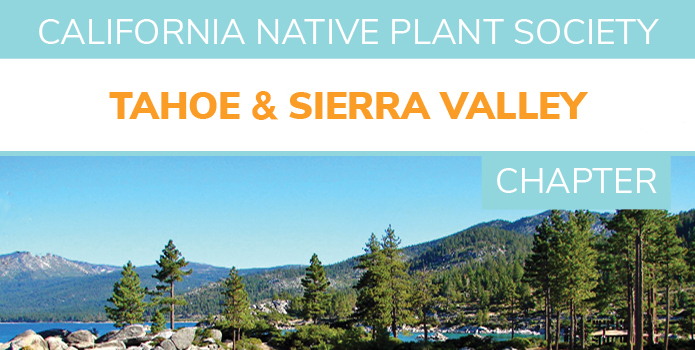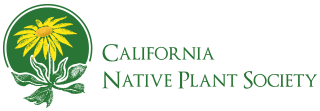August -September 2023
Newsletter
Summer is coming to an end and we hope you all have had a chance to get out, near or far, to enjoy some of the beautiful wildflowers of the area. The abundance of snow we received last winter produced an abundance of wildflower displays this year. The chapter sponsored several walks this year, we had a lot of fun, met many plant lovers, and made new friends. Although the season for wildflower walks is soon coming to an end we look forward to planning many more walks in the year to come. All the extra snow we received last winter has also extended the bloom time for many of our wildflowers, so there is still time to get out and enjoy them!
|
|
|---|
| In this Newsletter
▪️ Article: A Tale of Two Mints, by John Roos
▪️ Upcoming Events
▪️ Get Involved - Volunteer Opportunities |
|
|---|
|
A TALE OF TWO MINTS
by John Roos |
|
|---|
| In the Lake Tahoe area this summer, two of the most conspicuous members of the mint family (Lamiaceae) have been abundant, large-sized, and colorful (no doubt due to the bountiful snowfall this past winter) and they have attracted a huge number of visitors, mostly pollinators! These two plants are Coyote Mint, or Mountain Monardella, and Horse Mint, or Giant Hyssop.
The one earliest to bloom is Coyote Mint (Monardella odoratissima ssp. pallida). The genus name honors the Spanish botanist, Nicholas Monardes, and means “little monarda.” Odoratissima refers to the highly fragrant foliage, and in this case, pallida refers to the pale color of its flowers. The flowers vary from almost white to lavender. Other species and subspecies of Monardella are found throughout the west. Typical of the mint family, this plant has two-lipped flowers, is square-stemmed, and has oppositely arranged leaves. The attractive flowers are arranged in a dense group atop a sturdy, erect stem. The plants typically grow from 10-20 inches tall in semi-dry forest openings or in the partial shade in semi-moist soils. The flowers are not only attractive to the human observer, but most importantly to a host of butterflies, diurnal moths, bumblebees, and hummingbirds. The flowers are utilized as food for butterfly and moth larvae and then as nectar for the adults. |
| |
|---|
| On a recent CNPS-sponsored hike on the Luther Pass Trail, that borders El Dorado and Alpine counties, participants encountered an amazing number of these species. These included chalcedon checkerspot (Euphydryas chalcedona), painted lady (Vanessa cardui), white-lined sphinx moth (Hyles lineata), Sierra pericopid (Gnophaela latipennis), and bumblebees (Bombus vosnesenkii). Frankly, the sphinx moths stole the show, as they hovered like hummingbirds back and forth between flowers. Their size and constant motion have earned them the nickname, “hummingbird moth.” |
|
|---|
| The other mint that was making a big show was Horse Mint, or Giant Hyssop (Agastache urticifolia). Agastache, meaning “spikes” and urticifolia, meaning ‘nettle-leaved’. This plant, which grows up to five feet tall, was found in sunny openings where the soil was semi-wet. The pink flowers are clustered in fuzzy-looking spikes atop erect stems, with some individual flowers popping out the sides when young. The lanceolate to triangular leaves remind one of nettle leaves (also in the mint family). They are scented, but not quite as pleasant as the coyote mint. Some observers think they smell “a bit horsey.” Many Tiger Swallow Tail butterflies (Papilio rutulus) could be seen conspicuously making the rounds on the flower spikes. |
| |
|---|
| There is still time to catch this year’s big floral and pollinator show. Visit the Luther Pass Trail (7740’ elev.) or some of the other higher elevation trails in the area. Don’t forget some of the mints that might be in your own garden! Think lavender, spearmint, peppermint, basil, rosemary, sage, oregano, and many others. Are any of the pollinators that come around any of the ones that we saw that day on the trail. You might find even more varieties than highlighted in this Tale of Two Mints! Go explore!
|
|
|---|
| Upcoming Events
Talk: A Stitch in Time Saves Nine - Conservation of Biodiversity through Ecological Forest Management in the Northern Sierra Nevada.
Edward Smith, Senior Forest Ecologist & Fire Manager with The Nature Conservancy's California Program.
Edward is leading efforts to increase the quality and scale of ecological restoration of forests in the Sierra Nevada. He is working with a team and partners to accelerate the planning, prioritization and implementation of large-scale projects, and to quantify ecosystem service benefits of healthy forested watersheds resulting from improved forest management with an emphasis on forest resilience, biodiversity value, water quality and quantity, fire risk, and the ability of forests to sequester carbon. Edward has been focused on the use of fire behavior modeling to assess where hazards are greatest, effectiveness of various treatment scenarios, and for the prioritization of investments in ecological forest restoration.
Join us September 21st, 2023 at the Calpine Community Hall. Doors open at 6 pm for social hour. Come and learn about CNPS and its programs, meet local plant people, work on plant identifications and more...
Talk begins at 7 pm.
All are welcome! RSVP here. |
| |
|---|
|
Get Involved - Volunteer Opportunities
Are you interested in getting involved with the Tahoe & Sierra Valley Chapter? Our chapter could use your help.
Current openings include:
Vice President, Board of Directors
Events/Field Trip/Hikes Coordination, Newsletter Committee, Membership Coordinator, Webmaster, Horticulture/Garden/Firewise Communities Committee
We are always looking for event ideas, people to lead hikes, and contributors to newsletters and website content.
If you are interested in getting involved with any of the above or if you have other interests or skills that you would like to use to help promote native plants, let us know! Email us at tahoe@cnps.org
|
|
|---|
| |
|

